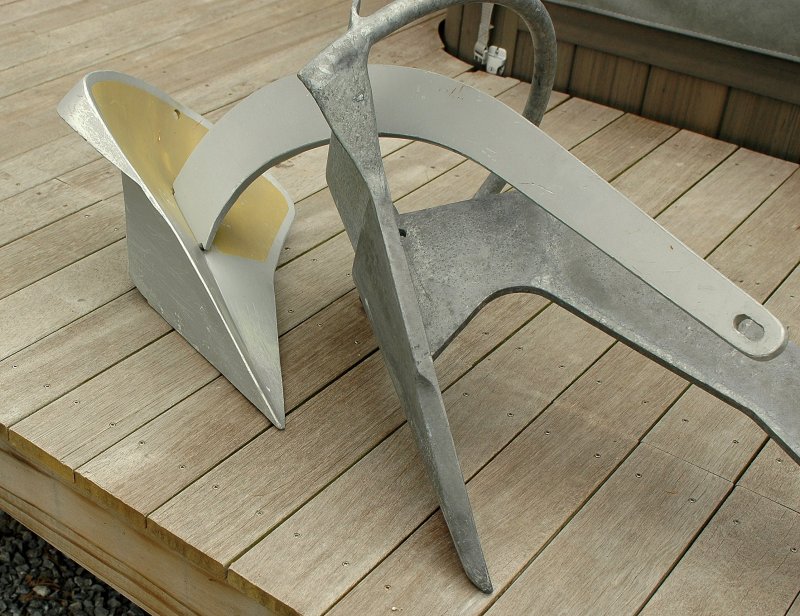It may well not, Danforth styles are horribly unreliable at setting. They should be used with great caution in a situation that might require self-resetting or as a primary bower anchor. Maine Sail's use as a stern anchor where it is only subject to a uni-directional pull is a more appropriate safe usage when wind or tidal shits are expected.
"The closest I've come to disaster was when my anchor dragged over a mile across a bay, towards rocks and a wall of concrete at Seaview, Isle of Wight. It was 0300 and everyone aboard was asleep when a windshift, aided and abetted by a change of tide, caused the Fortress FX-16 anchor to break out and drag... Though renowned for superb holding power, Danforth types can break out if the pull changes direction and they don't always regain their grip..."
"The closest I've come to disaster was when my anchor dragged over a mile across a bay, towards rocks and a wall of concrete at Seaview, Isle of Wight. It was 0300 and everyone aboard was asleep when a windshift, aided and abetted by a change of tide, caused the Fortress FX-16 anchor to break out and drag... Though renowned for superb holding power, Danforth types can break out if the pull changes direction and they don't always regain their grip..."
— Editor's Log, Yachting Monthly December 2006
Last edited:




